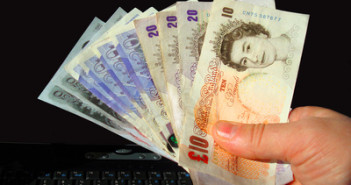Sterling continued its recent run of good form last week, strengthening against most major currency pairs, as it appears that the UK economy has emerged as one of the stronger global contenders. GBP surged against the Euro following the shock announcement from Draghi that the ECB will have to cut rates in the near future (possibly as early as next week). GBP has also remained strong against the US dollar due to lacklustre growth across the pond.
The UK has witnessed sustained economic growth of late, and this is adding to speculation that the BoE will step in to change things up in the next few months. But this will be dependant on increased inflation in the UK, so any data pointing to this is likely to be massively market-moving. The CPI and PPI data on Tuesday has the potential for considerable volatility. But the real movement is likely be seen on Wednesday, when three largely influential pieces of data are released at the same time, namely: MPC Asset Purchase Facility Votes, MPC Official Bank Rate Votes and the Retail sales m/m. This is coupled with the Second Estimate GDP q/q on Thursday to round off a full week data-wise for the UK.
The euro was the stand out loser last week following persistent speculation regarding additional ECB monetary easing next month which is likely to continue to erode the currency until the ECB meeting in June. A few weeks ago, Draghi single-handedly weakened the single currency as he alluded to the additional economic stimulus, and last week the euro fell for the second consecutive week against a basket of major currencies. The euro also weakened as investors fled bonds of the Europe’s peripheral economies, adding to pressure on the ECB to stimulate the struggling economy. This week the all-important German PPI on Tuesday will give insight into the consumer inflation of the Eurozone’s largest economy. Other than this, Thursday sees the release of the French and German Flash Manufacturing and services PMI – leading indicators of economic health from two of the Eurozone’s star players.
The US dollar seems to be benefitting from a change in risk sentiment, as risk aversion becomes the flavour of the month. In most other cases, the Greenback strength is mostly down to the weakness of other currencies such as the euro. Looking forward this week, a number of influential FOMC members are speaking on Tuesday and Wednesday ahead of the FOMC meeting minutes, which will give a detailed record of the FOMC’s most recent meeting, as well as each members interest rate forecast. Expect volatility leading up to and during this event. Thursday then sees the release of the latest unemployment claims. Being a leading factor in the Fed’s tapering decision, if this release indicates higher unemployment the Greenback may continue to weaken dramatically. Inversely, a positive print following on from the previous non-farm payroll data may see the US dollar claw back losses as optimism returns to the market.
Courtesy of FC Exchange.



